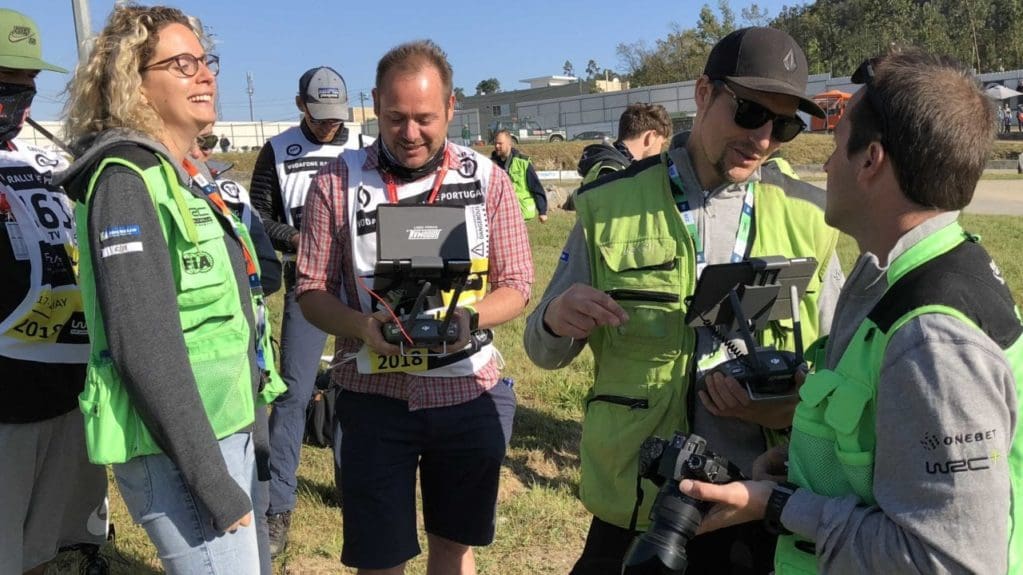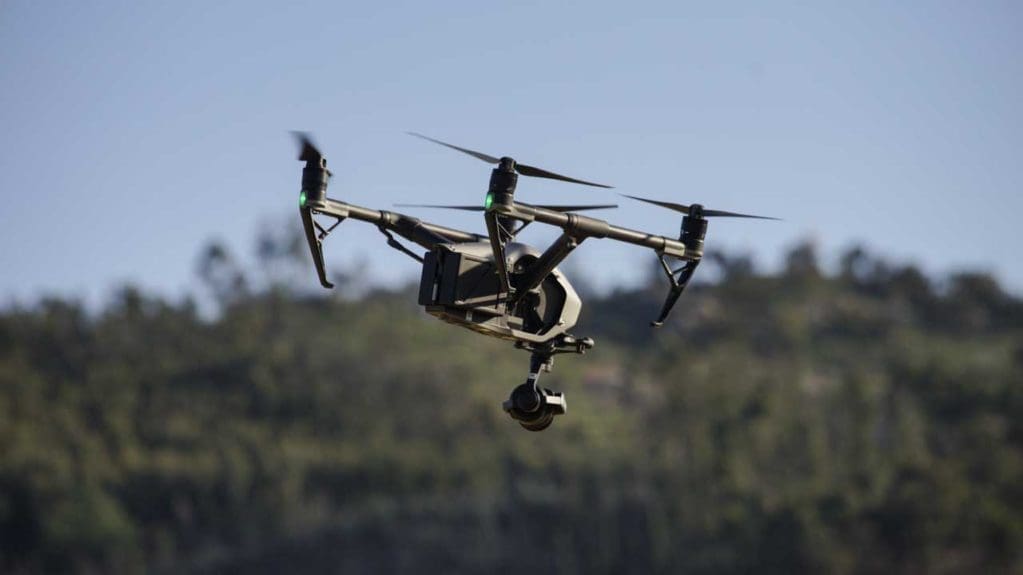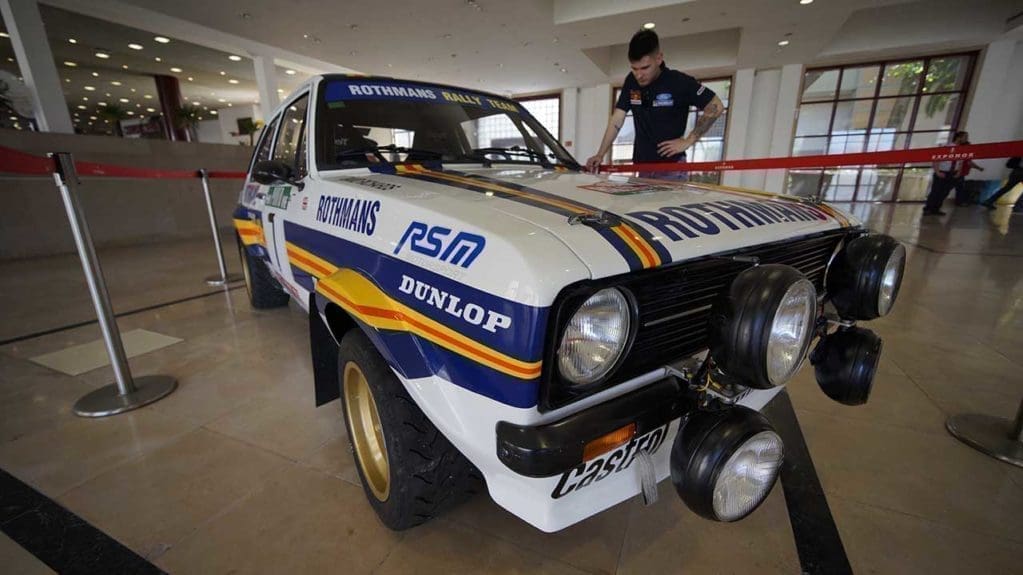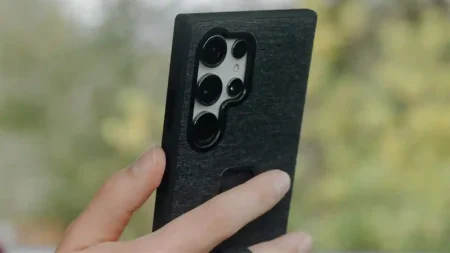If you read Part 1 of my trip to the World Rally Championship with DJI you’ll know that seeing the Porto Rally up close was incredible, but as we watched on in awe the DJI team was already thinking about the next stage.
Drones are methodically packed away, with memory cards and SSD’s removed and slipped into labelled envelopes ready for the production teams.
Then as the dust settled on the World Rally Championship (WRC) Shakedown, we left and head for the WRC Service Center.
The service centre is a good half-hour drive away and is the venue that houses the event logistics, along with everything from the cars, mechanics, drivers and merchandise to the huge mesmerised fan base.

On arrival, nothing could have prepared me for the overall scale of the event. I’ve been to a fair few sporting events over the years, but nothing of this size.
The track alone has 20 stages and covers 358 kilometres designed to punish the cars and drivers over four gruelling days. But the WRC isn’t just about the track and cars, there’s the warehouse full of mechanics checking and repairing, the ground crews, admin staff, catering, production, fans and, today, us.
Away from the noise of the service centre warehouses are the manufacturer and team tents, hospitality areas and the huge behind-the-scenes production that broadcasts every stage as it happens.
Arriving by card
The turnaround of the footage needs to be quick, and by the time we arrived at the service centre the DJI production team had already vanished into the vast complex.
With the team went the cards and drives containing the footage from the DJI Inspire 2 and P4 drones.

The footage on the MicroSD’s captured by the P4 and Inspire 2 is of lower quality than the ProRes stored on the SSD’s. The latter enables fast edits and the almost instant turnaround of clips for the eagerly awaiting public.
These clips can then be edited and made live quickly. Meanwhile, video from the Inspire 2 ProRes stored on the SSD is downloaded on to the mammoth video server and held back, ready for use as part of the larger production.
Seeing the team in action, you quickly realise just how slick its operation is; everyone plays their part in the greater process. There are procedures to be followed but these are now second nature, and the team gives off an air of relaxed professionalism.

Later on we were lucky enough to get a guided tour of the production and media areas and were welcomed into a thriving production process. It may all be temporary, but everyone involved looks at home and more than familiar with the environment.
It may be based in Porto this week, but this is a production studio that moves across the globe, with the same crew in different locations.
We entered the main area and spotted a group working tirelessly on the day’s production in a small open office area.
Off to the side were a series of small editing studios, each with an editor busy cutting down and editing the footage that continually rolls in from the various camera teams, including Team X, as the DJI crew is known.
As we walk through we enter a larger space with more edit desks, a large server and the teams that handle the broadcasts. It’s a thriving hub with plenty of activity, discussions and people coming and going.
What stands out is that this whole area only exists for four days a year before being packed up and moved to the next location. As you look at the machines, servers, desk and people, you see the flight cases carefully stacked and ready in the background.
The Service Centre
We then left the production area and briefly popped in to have a look at the media room. Again, this was a vast area where the world’s press gather to capture interviews with the drivers and teams and send back race reports.
We were then taken through more corridors and past some vintage rally cars from years past before arriving at the main service area. Here we got to see the rally cars up close.

After the shakedown, each driver feeds back car handling and performance to the teams and here is where they can strip down and rebuild. Once the race begins, there are strict rules and time limits in place, so everything needs to be correct before the race starts in earnest.
Added value from drone footage
Seeing the process first-hand, it’s apparent that the World Rally Championship is big business. They need broadcast solutions that enable their huge fan base to connect with the locations and ambience of each rally.
The use of different mediums to cover the event is a complex process, and as well as the national TV stations covering the event, such as BT Sport and ESPN in the UK, the events company rely on their own subscription-based live streaming services.

It’s a world that we as photographers rarely look at, but the subs-based model indeed works for this genre and the DJI footage all adds to the experience.
The partnership between DJI and the World Rally Championship is now in its fourth year and the volume of drone coverage increases with every event.
Watching back over some of the older series, you can see how the Inspire has added to and complemented the existing footage.
The bird’s eye view and low in-flight camera angles enable stunning dynamic footage that really help bring the action through the screen.
DJI might just be one part of the WRC production,, but the footage really stands out and adds to the excitement of the event.
After a day immersed in the life of the DJI event team I’m awestruck by the skill of the pilots and camera operators, as well as the ground crew.
Their professionalism, organisation and speed is something to behold and while I’m not about to hold or film my own rally, there tips and tricks that I will take with me and apply to projects in the future.

How to prepare for a drone video shoot
- Practice. Whatever the event or type of photo or video shoot you’re doing, make sure you practice at home.
- Plan. Know what you’re doing and have an idea and shot list for the day. If going out for fun then think about what you’d like to come home with.
- Preparation. Check your kit and ensure all batteries are charged and cards cleared and formatted the night before.
- Organisation. Make sure everything has it’s place; don’t just chuck all your kit into your bag.
- Label. Keep things labelled; if you swap out cards then pop them in an envelope and label them up, it will save time later.
- Film for the platform; Shoot ProRes and RAW is ideal, but speed is of ever-increasing importance. Shoot JPEG and AVCHD or MOV as well so you can edit on the move.
- Eat and drink. Ensure you take food and drink; it’s not always available, and at the end of the day make sure you have a beer. (UK: Warm. Rest of world: Cold)



